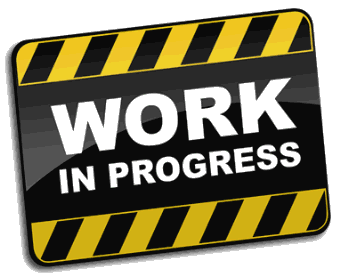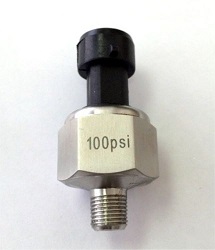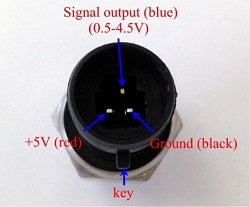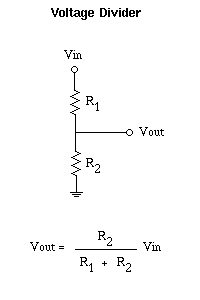Analog Pressure sensor
Jump to navigation
Jump to search
It is not too difficult to connect an analog sensor to the ESP, but there are a number of issues to be addressed.
- Some on board ADCs have a range from 0 ~ 1 volt, others from 0 ~ 3.3 volt. - The on board ADC has a 10 bit accuracy. This means that a full scale 1 volt (or 3.3 volt) read as 1023. - In spite of the high accuracy of the ADC, it operates in a very noisy environment. Don't expect high precision readings. - There are many more considerations. Just take a few minutes to read this posting as an example. [1]
If you want to measure pressure of liquids like oil or water, you could buy one of the pressure sensors on the internet, like this one:
The advantages: It is very easy to install, has an analog output and a linear conversion. There are however a number of challenges:
1 If you want to measure pressure in Bar, how is it converted from PSI With one of the many freely available converters on the internet, you can easily discover that 1 Bar (100.000 Pascal) equals to 14,5037737796859 PSI (pound per square inch). This sensor ranges from 0 to 6,89475729 Bar.
2 How can voltages higher than 1.0 or 3.3 volts be measured with the on-board ADC If the output impedance of the sensor is low enough, you can use a simple resistor network to create a voltage divider from ::: let's say 5 volt to 3,3 volt. If the impedance is high, the output voltage collapses when the output is loaded with a simple ::: resistor network. In these cases an amplifier (transistor, FET or Op-Amp) is required.
3 How can you make sensible readings with ESPEasy It takes some physics and math to answer this question and some calculations have to be made, but fortunateley ESPEasy allows for that.




